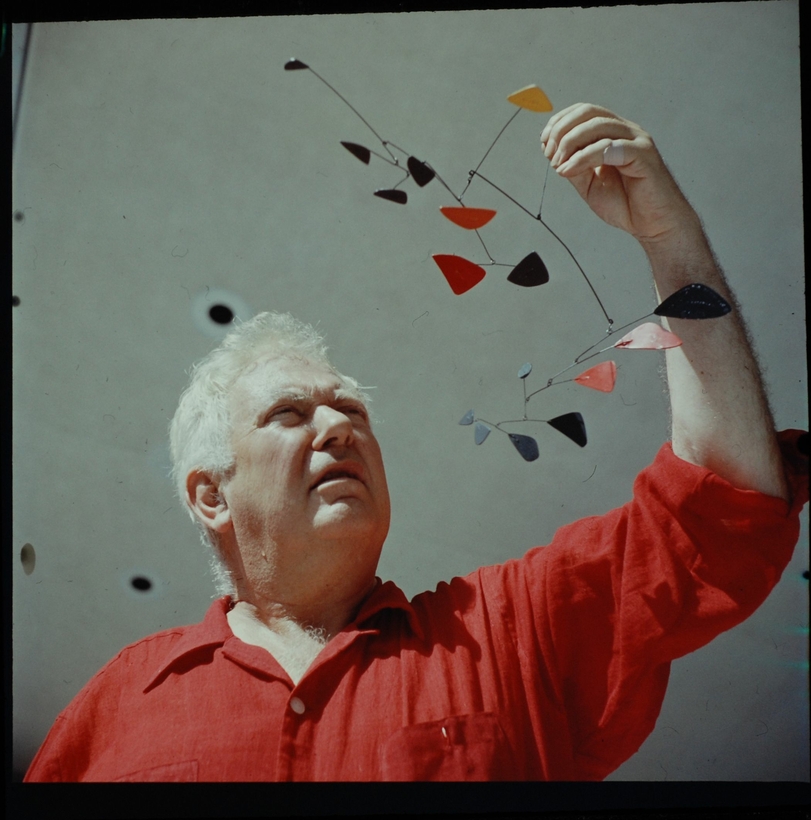It happened during lockdown. The Seattle collectors Kim and Jon Shirley were poring over a thousand-piece wooden puzzle on their dinner table when they began to hear “dings” above them. For 15 years an Alexander Calder mobile, with a bell, had hung silently above the table, “but this was really the first time we heard the work ring,” Jon Shirley tells AIR MAIL. “It just had to happen in that right moment.”
Perhaps it was saying, “Thank you.” The Shirleys had recently donated their complete Calder collection—48 pieces, valued at around $200 million—to the Seattle Art Museum (SAM). The hefty gift also came with a schedule of multi-year programming that’s exclusively dedicated to Calder and his legacy. It kicked off on November 8, with “Calder: In Motion,” an exhibition of the entire endowment.

“He is the most approachable artist of the last century,” Shirley says of Calder, “because his works are in motion, and they offer a new perspective to anyone looking at them.” The former president and C.O.O. of Microsoft believes that the artist’s kinetic sculptures and aerodynamic forms ask “visitors to take off their goggles and experience art firsthand in three dimensions.”

Jon Shirley’s relationship with SAM was forged 23 years ago when he and his first wife, Mary, provided funds for the museum’s acquisition of The Eagle, a monumental Calder sculpture from 1971. Back when Shirley lived in Texas, he drove by the 38-foot-tall, sheet-steel raptor every day; it was located at Bank One, in Fort Worth. When he later learned the piece was for sale, Shirley bought The Eagle. “It was an important piece to offer to the public at SAM’s Olympic Sculpture Park.” It was moved there in 2000.
Five years ago, the Shirleys made the decision to donate all their Calders to SAM, where Jon was a chairman. After the coronavirus hit the Northwest, he saw an urgent need to revitalize the city: “Downtown Seattle had changed drastically, and we needed a reason to bring people back.”

In the new SAM exhibition, visitors are greeted by Mountains (1:5 Intermediate Maquette) (1976), a nearly 12-foot-tall abstraction of a landscape that’s not so different from Seattle’s. “No matter which direction you look in this city, there are mountains,” notes Shirley, whose admiration for Calder began some 70 years ago when he visited MoMA in high school. A teenager interested in philosophy, poetry, architecture, and jazz, he was “hit hard” when he saw a Calder hanging in the museum’s stairwell. Shirley had seen his work in books, “but seeing it in person made me realize that it had encompassed air,” he remembers.

Squareish, a hanging mobile sculpture, was the first Calder the Shirleys acquired, around 35 years ago, through Pace Gallery. Over the years, other decorated names have entered their collection—Jasper Johns, Jackson Pollock, Alberto Giacometti, Julie Mehretu, Mark Bradford, Oscar Murillo, Joan Mitchell—but one artist still held that special place. In fact, the hardest Calder to see leave their home was the very first. After occupying the ceiling in their little television room for many years, Squareish now lives at SAM. “The great thing about a Calder is that it is always so subtle and airy,” says Shirley. “So many frequent guests at our house wouldn’t notice a 29-foot white sculpture, and then one day they’d ask, ‘Has this always been here?’”
“Calder: In Motion” is on at the Seattle Art Museum through August 4, 2024
Check out AIR MAIL’s Arts Intel Report, our newly revamped research tool for what to do, see, and watch around the world
Osman Can Yerebakan is a New York–based curator and writer

